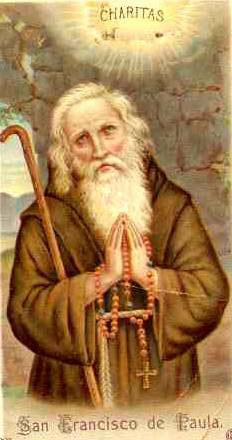We ask you, urgently: don't scroll past this
Dear readers, Catholic Online was de-platformed by Shopify for our pro-life beliefs. They shut down our Catholic Online, Catholic Online School, Prayer Candles, and Catholic Online Learning Resources essential faith tools serving over 1.4 million students and millions of families worldwide. Our founders, now in their 70's, just gave their entire life savings to protect this mission. But fewer than 2% of readers donate. If everyone gave just $5, the cost of a coffee, we could rebuild stronger and keep Catholic education free for all. Stand with us in faith. Thank you.Help Now >
Archdiocese of Mexico
FREE Catholic Classes
(MEXICANA.)
Boundaries
The boundaries of the Diocese of Mexico were at first not well defined. When Cuba was discovered three sees were erected, but when the prelates arrived, their episcopal sees had been destroyed, and the inhabitants had fled. In order to avoid such mistakes, the Holy See allowed the kings of Spain to fix the boundaries of the new dioceses erected on the American continent, still considered a part of Asia. From 1500 to 1863 the Diocese of Mexico extended from the Atlantic to the Pacific, namely from Tampico to Acapulco. At present it is confined to the Federal District, the States of Morelos, Mexico, and part of Hidalgo.
Bishops
The first bishop, Zumárraga, came to Mexico when Clement VII had just been released from the prison in Castel Sant' Angelo, where he was kept by Charles V for several months after the sack of Rome by Bourbon's army. Strange as it may seem, he was allowed and even obliged to come with only the emperor's nomination, governed the diocese without any papal appointment, and styled himself "Omnimoda potestate Antistes". He returned to Spain, received his Bulls, and was consecrated six years after his first arrival on the American continent. He has been falsely accused of having destroyed most valuable monuments; he ought not to be blamed for having burnt the idols, temples, and hieroglyphics which prevented the conversion of the aborigines. In his time the Blessed Virgin, according to Mexican tradition, appeared to the neophyte Juan Diego, and became the patroness of America. He introduced the first printing office in the New World, published many books, founded many schools and colleges, and was a saintly man, a faithful follower of St. Francis of Assisi, to whose order he belonged. He ruled over the diocese, raised before he died to the rank of an archdiocese, from 1528 to 1548.
Five provincial councils have been held in the city of Mexico. The first and second under the second archbishop, Alonso de Montufar. The third was presided over by the third archbishop, Pedro Moya de Contreras. The twenty-fourth archbishop, Francisco Antonio de Lorenzana assembled and presided over the fourth provincial council in 1770. Prospero Alarcón, thirty-second archbishop, was the president of the fifth and last provincial council in 1896. The most important of all was the third council, which has been for centuries the code of ecclesiastical law for the Mexican Church.
Archbishops Moya de Contreras, García Guerra, Palafox, Osorio, Ortega, Haro y Peralta, and Lizana y Beaumont were also viceroys and captains-general of New Spain, and were as able to brandish the sword as to wield the crosier. Archbishop Labastida was regent of the short lived empire of Maximilian. He was the last prelate to be invested with any political authority.
The most distinguished of the line was Francisco Antonio de Lorenzana, transferred to Toledo, and created cardinal by Clement XIV. He published several important books, founded many institutions both in New and Old Spain, helped with his own means Pius VI when he was sent to France as a prisoner by Napoleon, and largely contributed to the support of the cardinals assembled in Venice, in the conclave that elected Pius VII.
A few years after the conquest, viz., in the beginning of the sixteenth century, the Archdiocese of Mexico already possessed over fifty convents of nuns, a university, equal to that of Salamanca, several colleges, and numberless schools. Their number went on increasing, until all religious progress was stopped by the War of Independence and the civil wars that followed. All were destroyed by law and in reality under President Juárez. President Diaz has treated the Church better; but the penal laws have not been repealed. The present archbishop, Mgr. Mora y del Rio was born at Pajuacarán, 24 Feb., 1854; studied at Zamora and Rome ; was ordained, 22 Dec., 1877; consecrated Bishop of Tehuantepec, 19 Jan., 1893; and promoted to the See of Mexico, 2 Dec., 1908 in succession to Mgr. Alarcón. The population almost entirely Catholic is about 780,000.
Join the Movement
When you sign up below, you don't just join an email list - you're joining an entire movement for Free world class Catholic education.

-

- Stations of the Cross
- Easter / Lent
- 5 Lenten Prayers
- Ash Wednesday
- Living Lent
- 7 Morning Prayers
- Mysteries of the Rosary
- Litany of the Bl. Virgin Mary
- Popular Saints
- Popular Prayers
- Female Saints
- Saint Feast Days by Month
- Pray the Rosary
Pope Francis’ April Prayer Intention: Using Technology to Strengthen Human Connections
Finding Peace Through Prayer in a World of Worry
Trump Administration Withholds Federal Grants from Planned Parenthood Over DEI and Civil Rights Concerns
Daily Catholic
 Daily Readings for Wednesday, April 02, 2025
Daily Readings for Wednesday, April 02, 2025 St. Francis of Paola: Saint of the Day for Wednesday, April 02, 2025
St. Francis of Paola: Saint of the Day for Wednesday, April 02, 2025 Prayer for God's Help in Daily Actions: Prayer of the Day for Friday, March 14, 2025
Prayer for God's Help in Daily Actions: Prayer of the Day for Friday, March 14, 2025 Daily Readings for Tuesday, April 01, 2025
Daily Readings for Tuesday, April 01, 2025 St. Hugh of Grenoble: Saint of the Day for Tuesday, April 01, 2025
St. Hugh of Grenoble: Saint of the Day for Tuesday, April 01, 2025- To Perceive Animals as God's Gifts: Prayer of the Day for Thursday, March 13, 2025
![]()
Copyright 2025 Catholic Online. All materials contained on this site, whether written, audible or visual are the exclusive property of Catholic Online and are protected under U.S. and International copyright laws, © Copyright 2025 Catholic Online. Any unauthorized use, without prior written consent of Catholic Online is strictly forbidden and prohibited.
Catholic Online is a Project of Your Catholic Voice Foundation, a Not-for-Profit Corporation. Your Catholic Voice Foundation has been granted a recognition of tax exemption under Section 501(c)(3) of the Internal Revenue Code. Federal Tax Identification Number: 81-0596847. Your gift is tax-deductible as allowed by law.


 Daily Readings for Wednesday, April 02, 2025
Daily Readings for Wednesday, April 02, 2025 St. Francis of Paola: Saint of the Day for Wednesday, April 02, 2025
St. Francis of Paola: Saint of the Day for Wednesday, April 02, 2025 Prayer for God's Help in Daily Actions: Prayer of the Day for Friday, March 14, 2025
Prayer for God's Help in Daily Actions: Prayer of the Day for Friday, March 14, 2025 St. Hugh of Grenoble: Saint of the Day for Tuesday, April 01, 2025
St. Hugh of Grenoble: Saint of the Day for Tuesday, April 01, 2025

